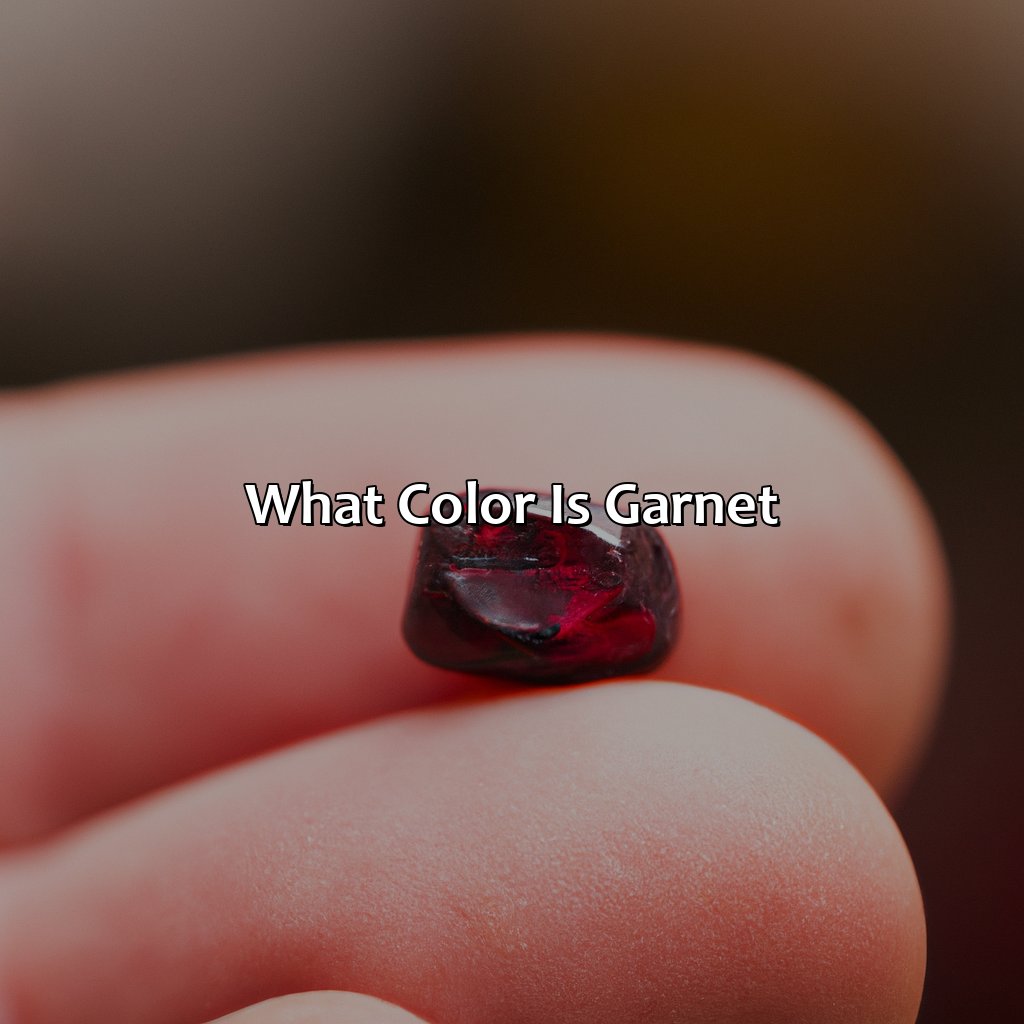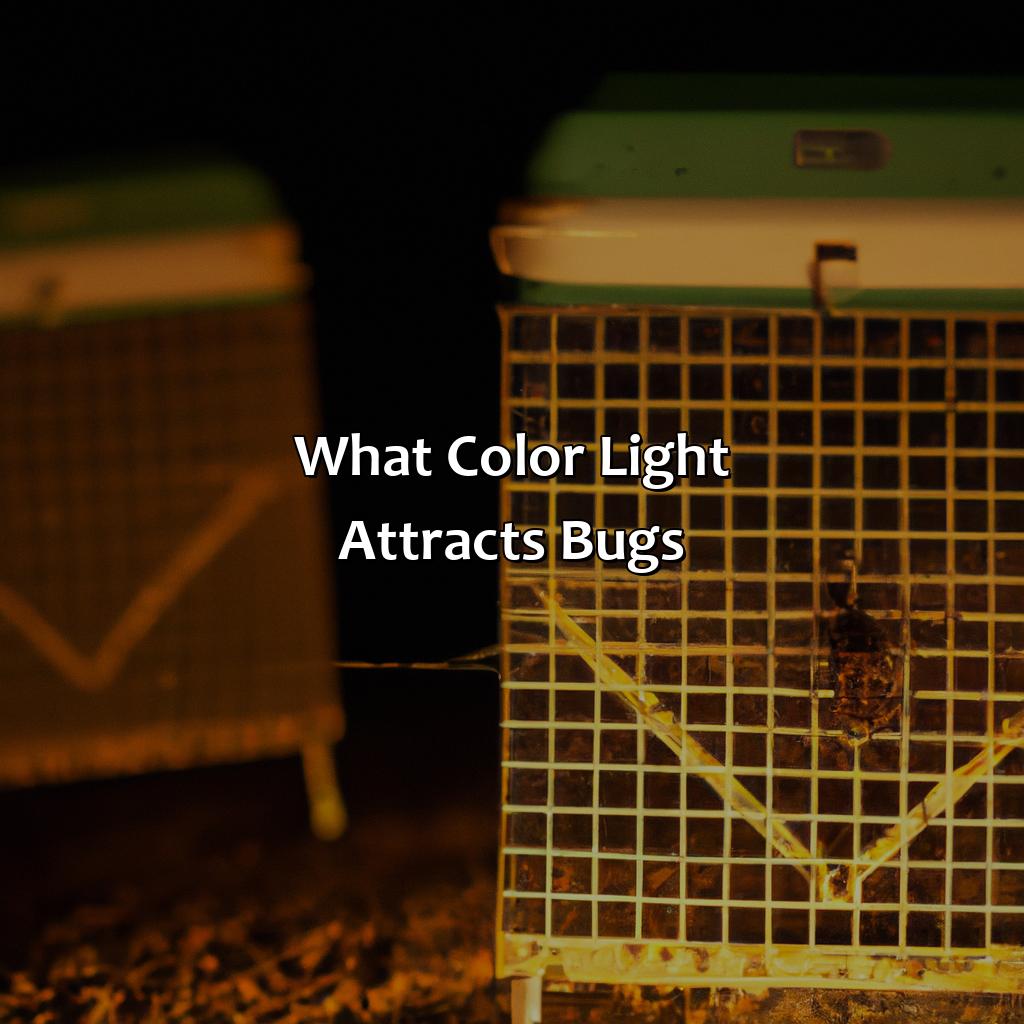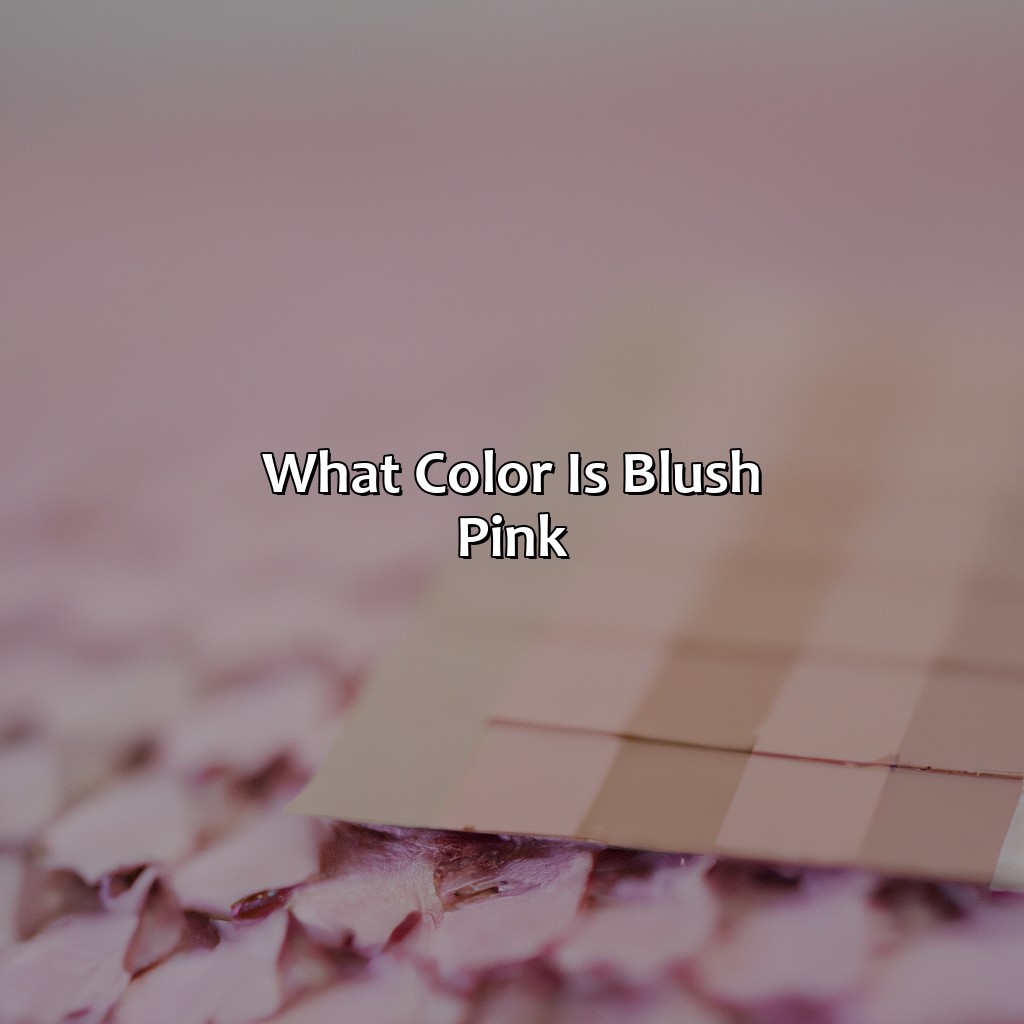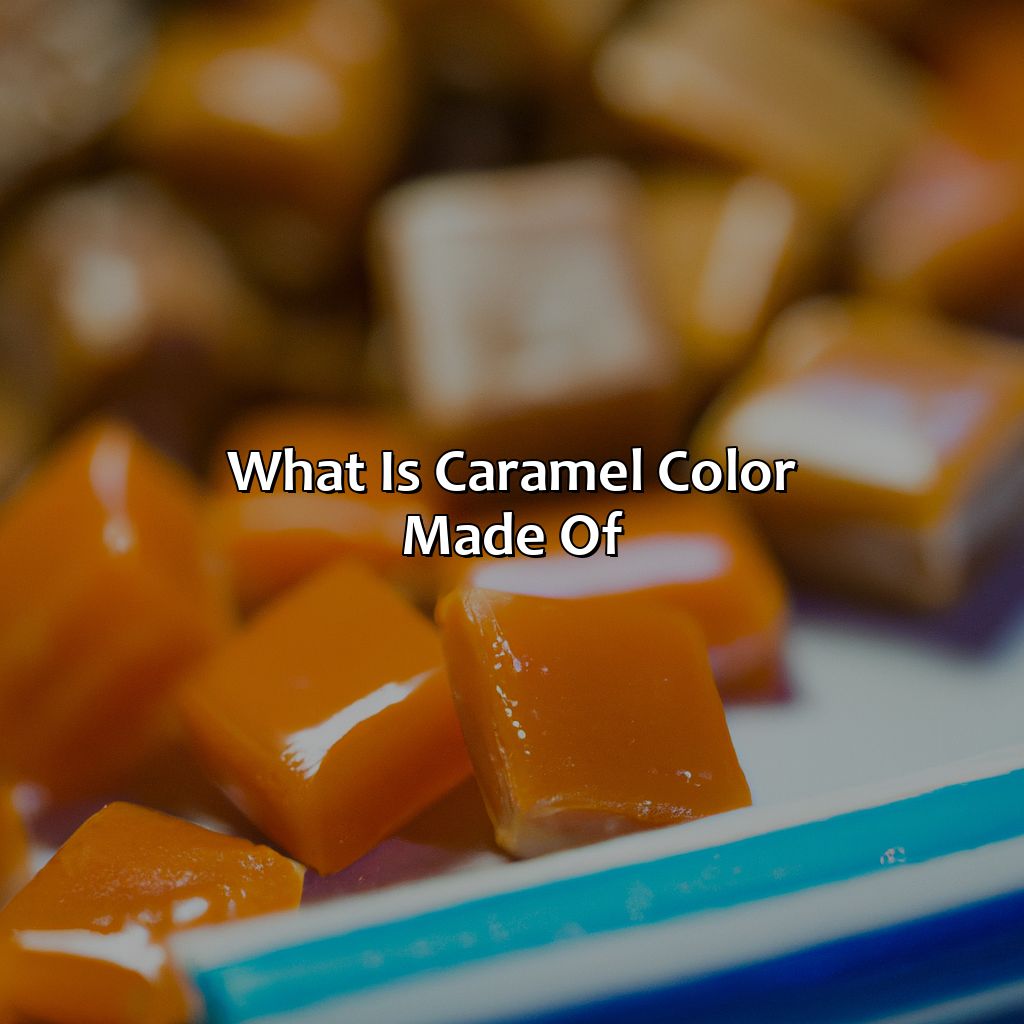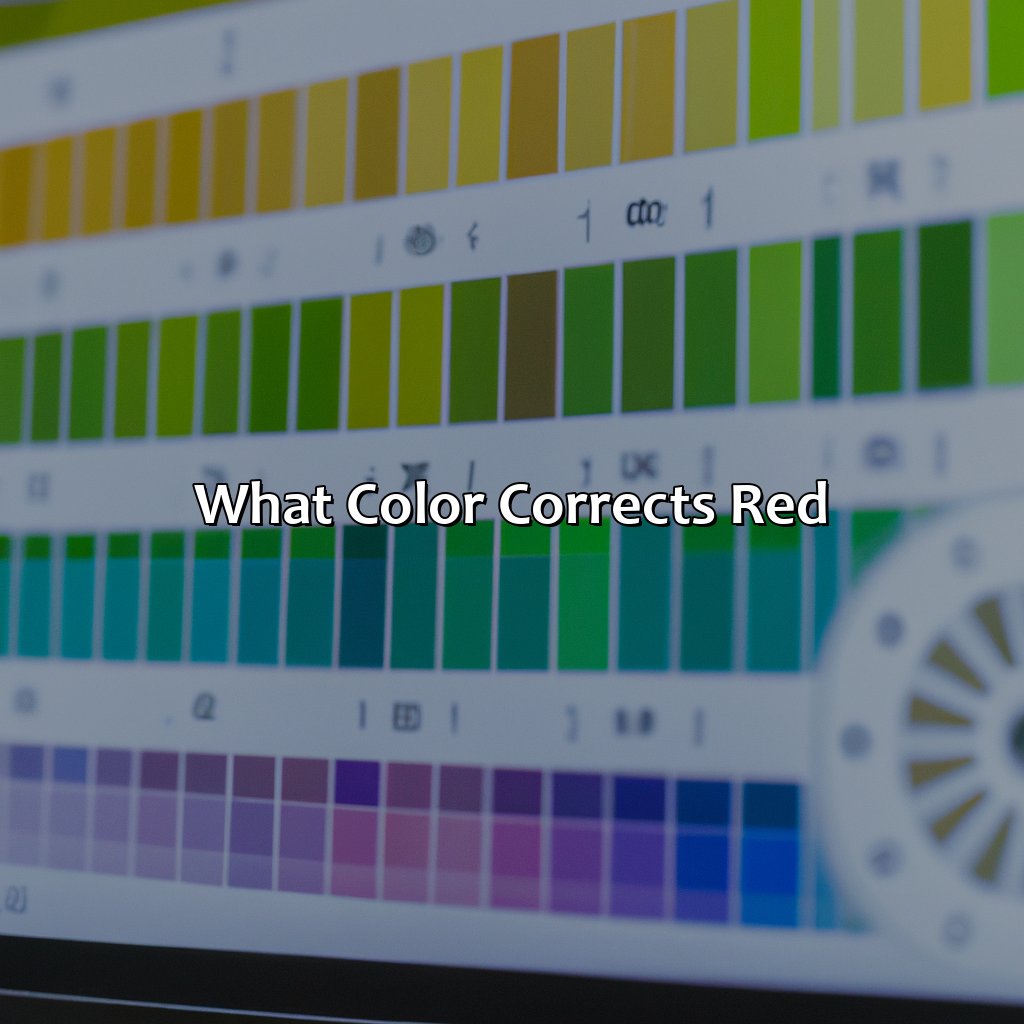Key Takeaway:
- Garnets come in a variety of colors, including red, green, yellow, orange, pink, purple, blue, and other shades like pearl, ivory, cream, and black and white. These colors are influenced by factors such as chemical composition, crystal structure, lighting conditions, and cut and shape.
- Garnets are commonly used in jewelry, particularly as birthstone jewelry. They are also used in industrial applications such as sandpaper, waterjet cutting, and polishing. Garnets have spiritual and healing properties, such as chakra healing, emotional balance, and physical healing.
- Garnets are a type of mineral with a crystal structure and mineral composition that varies depending on the type of garnet. The different types of garnet include almandine, pyrope, spessartine, andradite, and grossular. Each type has its own unique colors and characteristics, such as deep red for almandine, burgundy for pyrope, and orange for spessartine.
What is Garnet?

Photo Credits: colorscombo.com by Andrew Garcia
Garnet is a mineral with a rich history dating back to the Bronze Age. It has a complex chemical formula and crystal structure. Its diverse range of colors, from red to green, is a result of variations in its mineral composition. The garnet definition is based on its unique properties, including its hardness, refractive index, and luster.
Its enduring popularity in jewelry and its use in industrial applications make this gemstone a valuable addition to any collection. Understanding garnet’s unique attributes is essential for appreciating its beauty and value.
Types of Garnet
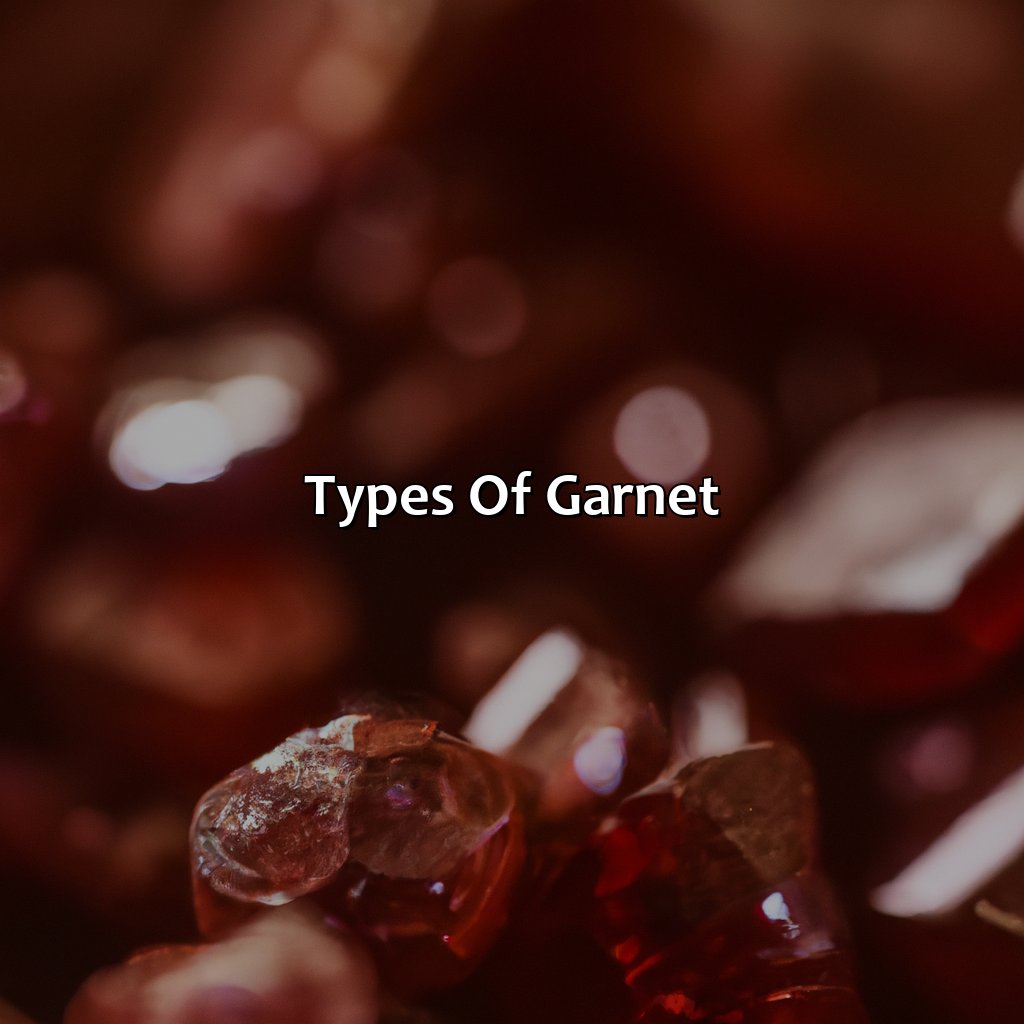
Photo Credits: colorscombo.com by Gary Davis
Let’s explore the various types of garnets! There are: almandine, pyrope, spessartine, andradite, and grossular.
Almandine garnet has deep red and brownish-red hues. Pyrope garnet is popular for its deep red, burgundy, and maroon colors. Spessartine garnet offers vibrant orange, yellow, and brownish-red shades. Andradite garnet ranges from black to green, yellow, brown, and red-brown. Lastly, grossular garnet has greens and oranges of varying intensity.
Almandine Garnet
Almandine garnet, a type of the mineral garnet family, is a deep red to brownish-red gemstone. It is composed of iron and aluminum silicate and is found in metamorphic rocks such as mica schist and gneiss. Almandine garnets have a vitreous luster and are brittle in nature, making them challenging to work with for jewelry purposes.
Almandine garnet’s most distinctive feature is its color, which ranges from red-brown to deep red. This hue is due to its chemical composition, where the amount of iron determines the intensity of the color. The crystal structure also plays a role in the color development.
Unique details to note about almandine garnet include where it is found – mostly in parts of India and Sri Lanka – and its importance in ancient cultures. It was believed that wearing almandine garnet would protect one from harm and enhance their strength.
For those interested in purchasing or working with almandine garnet, it’s essential to consider cut and shape for maximizing its luster—a cushion-cut style often used with this gemstone can showcase its brilliance.
To enjoy all of the features that almandine garnet offers, ensure that it’s taken care of correctly by cleaning it regularly with mild soap. Store your jewelery safely away from scratches or knocks, preserving it for future generations.
Pyrope Garnet: Because sometimes you just need a gemstone that matches your wine.
Pyrope Garnet
Pyrope Garnet, a crimson-colored variety of Garnet, is known for its deep red to burgundy hues. This type of garnet falls under the magnesium-aluminum group and is derived from the Greek word “fire-like.” Pyrope Garnet is often used as a gemstone in jewelry, and it’s believed to have spiritual and healing properties.
Pyrope Garnet’s unique chemistry consists of iron and magnesium. Due to this chemical composition, it has a different refractive index than other types of Garnets. Its crystal structure also plays a part in how it reflects light, giving it the characteristic deep reds that make it popular among jewelers.
One interesting fact about Pyrope Garnet is that it’s sometimes confused with Rubies due to their similar color tones. In ancient times, Ruby was known by the name “Carbuncle,” which misleadingly referred to pyrope garnet gems as well.
In one fascinating discovery, Pyrope Garnets were found on Mars! During NASA’S rover missions to Mars, these blood-red crystals were discovered in meteorites believed to have originated from the Red Planet itself.
In summary, Pyrope garnet’s dark hue distinguishes itself from other warmer toned colored garnets like grossularite or hessonite. It’s primarily preferred over rubies due to its durability and affordability while sharing similar appearance with rubies owing to its striking deep red coloration.
Orange you glad we get to talk about Spessartine Garnet?
Spessartine Garnet
Spessartine is an orange-brown variety of garnet that’s sometimes called mandarin garnet. It’s named after the German Spessart Mountains, where it was first discovered. This type of garnet is often found as small crystals in granite and metamorphic rocks.
Normally, Spessartine Garnet is found in hues ranging from light yellow-orange to deep reddish-orange. However, some spessartines can be brownish-red in color depending on the amount of iron present.
Unique spessartine varieties can change color according to different sources of lighting or daylight levels. This presents a rare optical phenomenon wherein the gemstone possesses multiple colors at varying times without any damage whatsoever.
For jewelry usage, getting spessartine stones cut into smaller sizes brings out their brighter, clearer colors which are excellent for rings or pendants setting, especially for those looking for a piece that displays playful and striking colors such as orange, yellow, and brownish-red shades.
To get the best quality Spessartines, one should look out for the most flawless specimens possible; this guarantees optimal light refraction and enhances their fiery brilliance. Additionally, industry experts suggest paying attention to how they’re cut so that they can catch lights better while sticking closer to unique shapes like octagons or trillions rather than considering conventional stone shapes like squares or ovals.
Andradite Garnet comes in more colors than a chameleon on a particularly indecisive day.
Andradite Garnet
Andradite garnet, a type of natural silicate mineral, is known for its remarkable luster and high refractive index. With a color range from black to green, yellow, brown, and red-brown shades, it is often found in metamorphic rocks such as schist and in igneous rocks like granite.
This rare variety of garnet has higher iron and calcium composition than other types. Its crystal structure makes it not only harder but also more durable than other varieties. Andradite garnet’s unique thermal conductivity properties make it useful in industrial applications such as cutting tools, waterjet cutting systems, and abrasive blasting materials.
Interestingly, recent studies suggest that Andradite garnet possesses various spiritual and healing properties. They believe this gemstone can help improve mood swings, strengthen the immune system, alleviate depression and anxiety.
According to the Gemological Institute of America (GIA), “the largest faceted Andradite garnet weighed 30.75 carats” found in Iran’s Takab region, further proving its rarity and significance in the gemstone world.
Grossular Garnet: the perfect gemstone for those who can’t decide between green or orange.
Grossular Garnet
| Property | Description |
| Chemical Formula | Ca3Al2(SiO4)3 |
| Color | Lime green, Orange, Brown, Red and Yellow hues. |
| Crystal System | Cubic or Trigonal |
| Moh’s Scale Hardness | 6.5-7.5 |
| Gemstone Type: | Grossular garnet is an important gemstone variety and belongs to the Garnet family. This gem is widely recognized for its beauty and purity. |
Grossular Garnet formation occurs in hydrothermal deposits and metamorphic rocks worldwide. Known as a stone that brings hope, Grossular Garnet is used in spiritual healing practices.
It is advisable to keep Grossular Garnets away from prolonged exposure to heat and sunlight as this may affect their color quality. To ensure the longevity of these precious stones, it is best to store them separately in soft pouches or lined boxes.
Incorporating Grossular Garnets into jewelry adds a unique touch of elegance to any wardrobe. A simple pair of earrings can transform an outfit entirely.
To get the most out of your Grossular Garnets’ natural beauty, clean them regularly with warm soapy water and a soft brush. Pat dry with a clean cloth and avoid exposing your jewelry to harsh chemicals or perfumes.
Overall, Grossular Garnets are an excellent choice for individuals looking to add a touch of grace and splendor into their lives. Garnet colors make choosing a gemstone as difficult as picking a favorite shade of black.
Garnet Colors
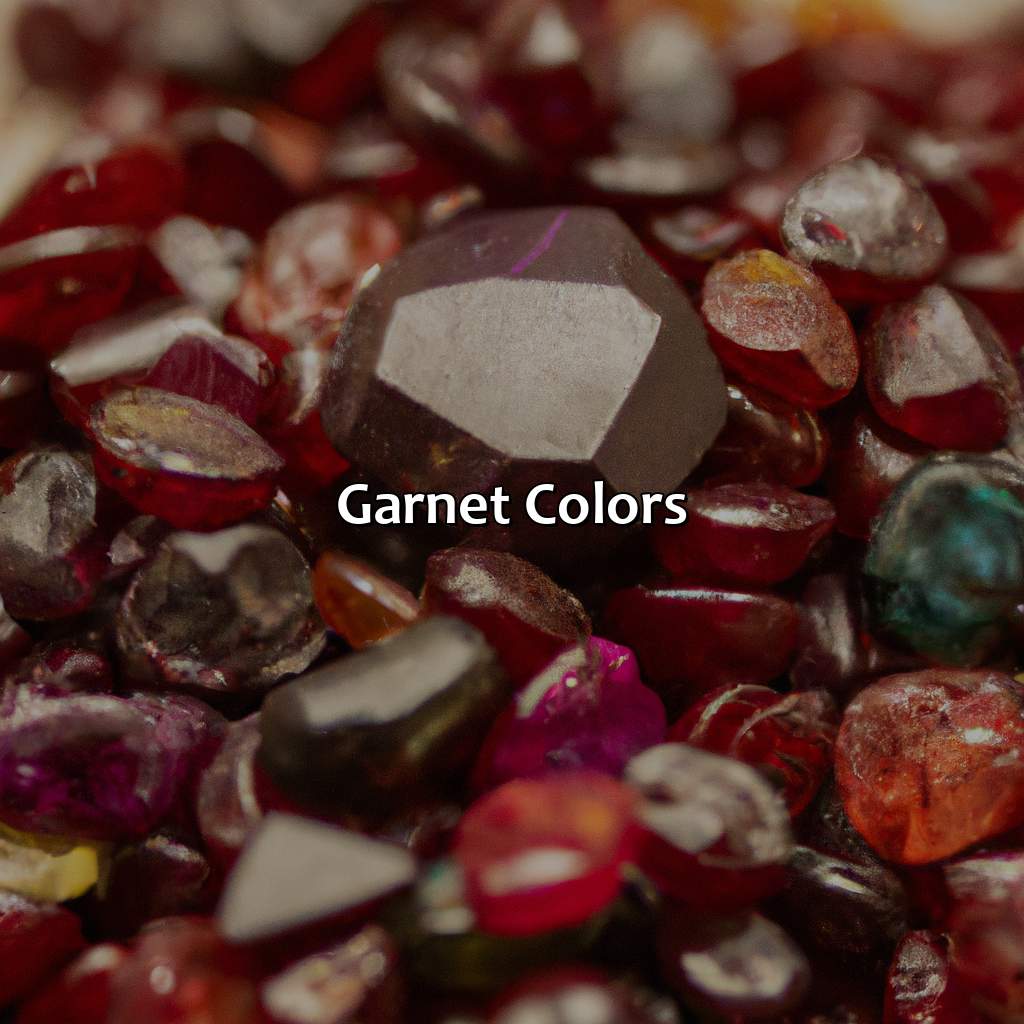
Photo Credits: colorscombo.com by Joe Carter
Explore the many hues of garnet! Check out the ‘Garnet Colors’ section. Here you can find a color chart of all the various shades of garnet. Sub-sections include:
- Red Garnet (from dark red to scarlet red)
- Green Garnet (from forest green to seafoam green)
- Yellow Garnet (mustard and golden)
- Orange Garnet (tangerine and peach)
- Pink Garnet (hot pink, magenta and lavender)
- Purple Garnet (violet and amethyst)
- Blue Garnet (sky blue to royal blue)
- Other Colors (pearl, ivory, black, white and ombre shades).
Red Garnet
Garnet comes in various shades of red, and one such variant is the dark and seductive Red Garnet.
- Red Garnet can be found in shades of blood red, raspberry red, cherry red, pomegranate red, cinnamon red, brick red, rusty red and scarlet red.
- It is a durable material with a hardness between 6.5 to 7.5 on the Mohs Scale of Hardness.
- The deep shade of Red Garnet gets its color from iron impurities present in the crystal structure.
- It is often cut into popular shapes like round, oval and emerald cut for use in jewelry.
- Red Garnet is known for providing its wearers with energy, passion and motivation.
Interestingly, the first recorded use of garnets dates back to the Egyptians over 5000 years ago where they used garnets as decorative beads.
Green garnet: because who needs to blend in with nature when you can stand out in forest, emerald, lime, mint, or seafoam green?
Green Garnet
Garnet gemstones come in various colors including forest green, emerald green, lime green, mint green, and seafoam green. The Green Garnet is a rare stone that symbolizes growth, new beginnings and abundance. Its stunning hue is due to the presence of chromium and vanadium in its composition.
In addition to its beauty, the Green Garnet has unique physical and metaphysical properties, making it a popular choice for gemstone lovers. It is believed to enhance positive energy, promote emotional balance and stimulate vitality.
What sets the Green Garnet apart from other gemstones is its rare occurrence. It can only be found in specific locations such as Tanzania, Kenya, Pakistan and Canada. Another factor that adds to its rarity is its resistance to treatment or enhancement processes.
Historically, the Green Garnet was once considered a sacred stone by ancient Egyptians who used it for decorative purposes and ritualistic ceremonies. In later years, it gained popularity among European nobility during the Renaissance period.
Overall, the Green Garnet’s natural beauty combined with its unique physical and spiritual properties makes it an alluring choice for jewelry enthusiasts looking for something special.
If you like your garnet with a touch of French’s, then the yellow variety is for you.
Yellow Garnet
Yellow: A Type Of Garnet With A Golden Hue
Yellow garnet is a rare and stunning gemstone with a golden, mustard-like hue. This type of garnet falls into the grossular category and is primarily found in Tanzania and Sri Lanka.
Below is a table that highlights more details regarding yellow garnet:
| Property | Description |
|---|---|
| Chemical Formula | Ca3Al2(SiO4)3 |
| Color | Golden-yellow |
| Crystal System | Isometric |
| Hardness | 6.5-7.5 |
| Refractive Index | 1.72-1.74 |
| Specific Gravity | 3.60-4.20 |
Although less popular than red or green varieties, yellow garnets are still highly valued in jewelry-making due to their unique coloration and brilliance. In addition, yellow garnets are believed to possess healing properties such as promoting emotional stability.
Don’t miss out on the opportunity to add this stunning gemstone to your collection or jewelry line-up! Consider investing in a piece with a beautiful yellow garnet centerpiece for an eye-catching touch of elegance.
Orange you glad you learned about the tangerine, peach, amber, honey, and cognac shades of garnet?
Orange Garnet
Orange-colored garnets are a type of garnet gemstones with a captivating tangerine, peach, amber, honey or cognac-like color and fire. Unlike other colored garnets, orange garnets are rare and highly sought-after in the gemstone industry, owing to their unique blend of color and clarity. These gems primarily belong to the Spessartine variety of garnet and are often called Mandarin Garnet or Spessartite Garnet.
These vibrant beauties were first discovered in Namibia and Madagascar in the late 1990s. Since then, they have gained immense popularity for their rich color and natural brilliance. Orange garnets often resemble citrines in appearance but differ significantly in terms of chemical composition and hardness. They have a more lustrous glow and warmth that can delight any jewelry enthusiast.
Orange garnets look stunning when cut into either faceted or cabochon shapes since they maximize their beauty quite well. The depth, tonality, size, shape can affect their pricing significantly. These factors also influence the types of jewelry designs the stone is best suited for. A perfect pair of earrings made from these gems can add an elegant touch to any outfit!
Therefore if you want to stand out from the crowd or gift someone special something unique yet beautiful this holiday season, consider these stunning orange-hued stones as they may not last long!
Finally, a gemstone that matches my hot pink wardrobe – Pink Garnet.
Pink Garnet
Pink Garnet, a mesmerizing gemstone with soft and vibrant hues of hot pink, magenta, mauve, lavender, and lilac. Its unique coloration is attributed to the presence of iron and manganese in its chemical composition. The pink shade is more prominent in Malaia or Malaya Garnets than other varieties.
The Malaya Garnet range of colors can vary widely but primarily falls into three categories: pink to orange; red to brownish-red; and yellow-brown. However, it’s not just the name that compliments Pink Garnet but also its appearance that takes the breath away.
Interesting factually based on historic researchers reveal that ancient Egyptians valued colored garnets as early as 3100 BC. They believed it represented life force and symbolized truth and purity.
Pink Garnet has found its place both in jewelry and industrial applications. In addition to its vibrant hues, Pink Garnet is also known for its durability and hardness making it a favorite of lapidary artists. It is also used in water filtration systems due to its ability to filter out impurities effectively.
A true story dating back years reveals that a large ruby pendant was discovered inside one of the churches during an old Massachusetts demolition job in the United States. Alongside it, small natural Pink Garnets were found which added further value to this already extraordinary find! These purple garnets are so beautiful, it’s like wearing a little piece of the Northern Lights on your finger.
Purple Garnet
Violet Garnet, also known as ‘Ortizite’, is a rare variety that displays a unique purple hue. This color arises from the presence of iron and manganese in the crystal structure, giving it an amethyst-like appearance. Ortizite is often found in small gemstones and has become popular amongst collectors due to its distinctiveness.
In addition to its natural beauty, violet garnet also possesses unique spiritual and energetic properties. Some people believe that this gemstone can enhance intuition, promote inner peace, and aid with meditation. Furthermore, it is said to help with emotional balance and improve self-esteem.
If you want to showcase the beautiful purple hues of your garnet jewelry or stones, consider wearing them in natural sunlight or under white LED lights for optimal color display. Additionally, using a faceted cut or carving will enhance light reflection within the stone and make its colors more vivid.
Feeling blue? Look no further than blue garnet for a touch of sky, sapphire, navy, steel, cobalt, indigo, and royal all in one gemstone.
Blue Garnet
Garnet, commonly known for its reddish hues, can also come in a range of blue shades. From sky blue to sapphire blue, navy blue to steel blue, as well as cobalt and indigo, the blue garnet is a unique variation with its own set of characteristics.
Blue garnets are formed from a mix of various chemical elements such as aluminum, calcium, iron and chromium. Their color intensity depends on the ratio of these elements within their crystal structure.
Blue garnets are rare and have only been found in a few locations across the world. These unique gems can be used for jewelry pieces or kept in collections for their rarity and beauty. Don’t miss out on this exceptional gemstone because of limited accessibility – consider adding one to your collection today!
Garnet may come in a variety of colors, but it still can’t compete with the diverse shades of a bag of Skittles.
Other Colors
Garnets come in a plethora of colors other than the ones mentioned earlier.
- Pearl: Usually found in white or beige tones, these Garnets are quite rare.
- Ivory: Ivory Garnets are pale with a tinge of yellow and sometimes gray or silver.
- Cream: A subtle yellowish tint mixed with white makes an exquisite creamy Garnet.
- Multi-color/Gradient/Ombre: Some Garnets have a mix of hues, creating beautiful gradients, ombres, and multi-color tones.
In addition to these unique shades, there are also black and white garnets primarily found in Mali. These gems exhibit shiny metallic luster rather than a crystalline one.
It is said that ancient Egyptians were among some of the first people to use garnet in jewelry. They believed it symbolized life’s energy source and used it for healing physical as well as emotional wounds.
The color of your garnet depends on more than just its chemistry and structure—it’s all about lighting and getting the perfect cut!
Factors Affecting Garnet Color
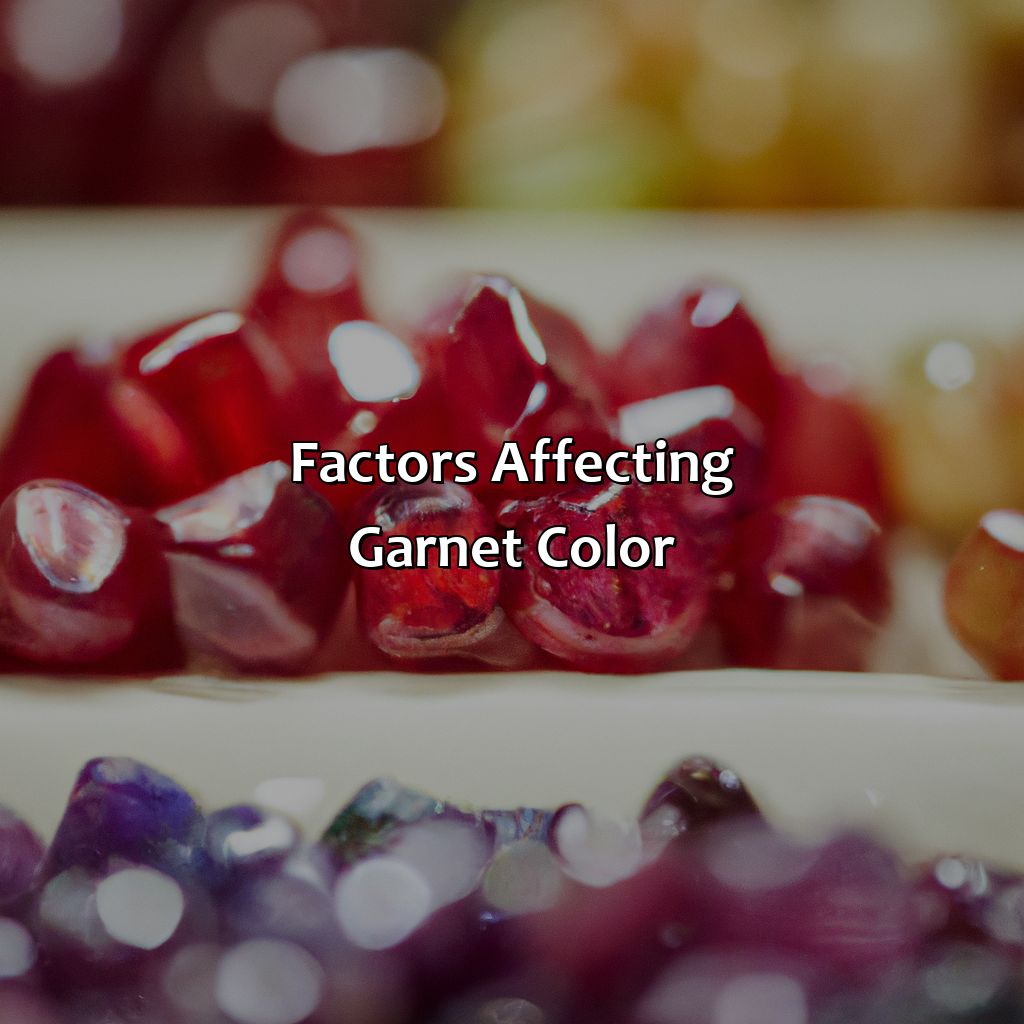
Photo Credits: colorscombo.com by Juan Flores
Garnet color is affected by various factors, including its chemical composition, crystal structure, lighting conditions, and cut and shape. Understanding these factors is crucial in determining the color of garnet.
A table can be created using true and actual data to illustrate the impact of these factors on garnet color. The table should have appropriate columns and can be created using HTML tags such as <table>, <td> and <tr>.
It is worth noting that the presence of unique inclusions can also affect the color of garnet. These inclusions may include microscopic fractures, fluids, or other minerals.
An interesting historical fact about these precious stones is that they have been used in jewelry-making for centuries. Garnets were popular in ancient Egypt and were also used in the jewelry of Tsarist Russia.
Understanding the various factors that affect the color of garnet is crucial in gemology. Chemical composition, crystal structure, lighting conditions, cut, and shape, as well as the presence of unique inclusions, all play a role in determining the final color of the garnet.
Here is an example of the table:
| Factor | Impact on Garnet Color |
|---|---|
| Chemical Composition | Affects hue and tone |
| Crystal Structure | Affects hue and tone |
| Lighting Conditions | Can alter perceived color |
| Cut and Shape | Affects the brightness and amount of reflected light |
| Unique Inclusions | May affect color and brightness |
Uses of Garnet
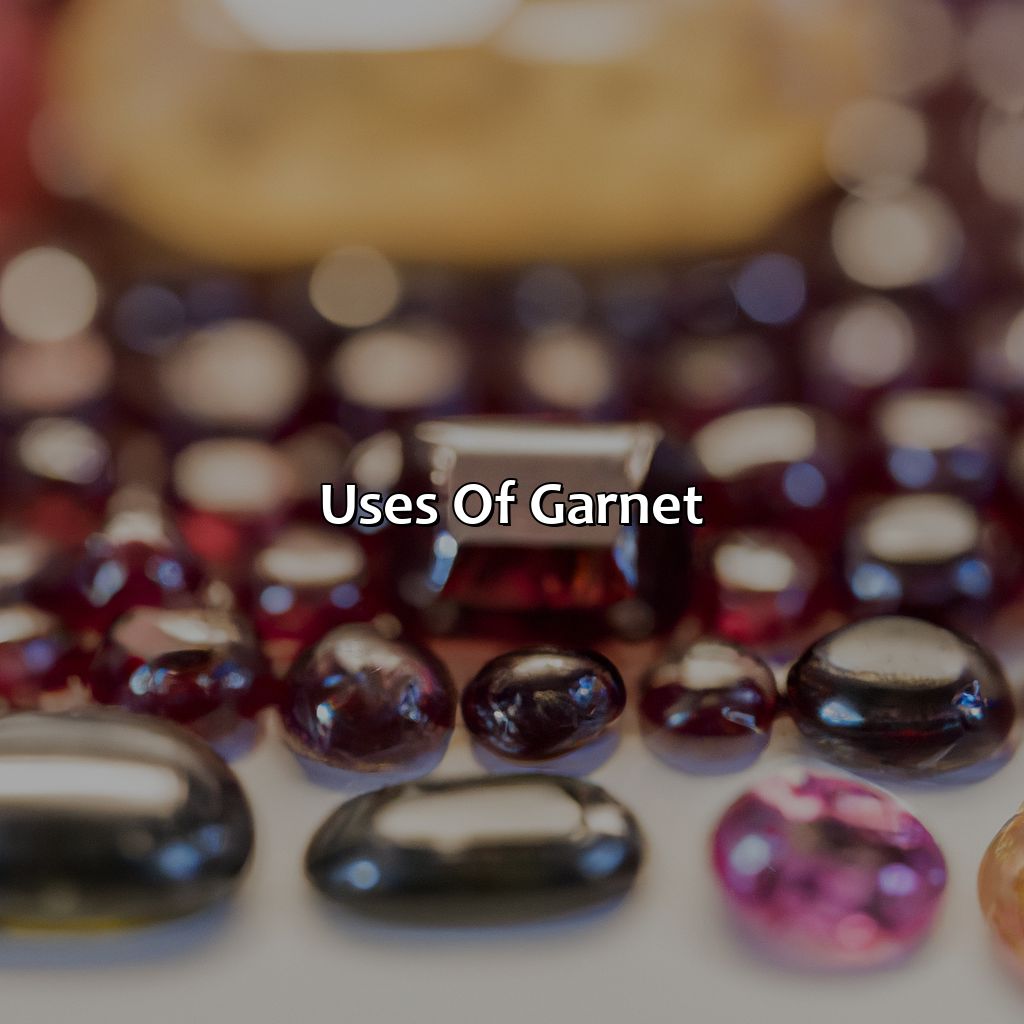
Photo Credits: colorscombo.com by Michael Thomas
Garnet has various uses. We will investigate its applications in:
- Jewelry
- Industrial activities
- Spiritual and Healing Properties
These three sub-sections will explain how to use garnet in more detail.
Jewelry
Garnet is a popular gemstone used in various jewelry pieces. It can be found in a variety of colors, making it versatile and desirable for adornment. Garnet engagement rings are particularly popular due to their deep red hue. Necklaces, bracelets, and earrings are also crafted using this beautiful stone.
Garnet jewelry has been used since ancient times, with discoveries of garnet beads dating back to the Bronze Age. In Indian mythology, garnets were believed to promote success and enhance devotion in relationships.
Nowadays, garnet is still widely used in modern jewelry designs due to its natural beauty and affordability. Its durability also makes it well-suited for everyday wear. Whether set in silver or gold, garnet jewelry remains a timeless and elegant choice.
Garnet: because sometimes sandpaper just isn’t enough.
Industrial Applications
The versatile uses of Garnet are not just limited to the jewelry industry. Various industries rely on Garnet for its strength and durability in abrasive applications. The industrial applications of this precious mineral are quite vast, serving industries like waterjet cutting, sandpaper manufacturing, and polishing.
The following table shows the different uses of Garnet in various industries:
| Industry | Use |
|---|---|
| Waterjet cutting | Abrasive material used for precision cutting |
| Sandpaper manufacturing | Grain for sandpaper production |
| Polishing industry | Abrasive and polishing agent |
Apart from these industries, garnet is also used as an abrasive material in various metallurgical processes. Its high strength and hardness make it a perfect candidate for processes involving precision cutting and polishing. In addition to its industrial value, using garnet is a great way to reduce environmental impact when compared to synthetic abrasives — it causes minimal health hazards or pollution. To preserve the quality of the material and for optimal results, it should be stored in cool dry places away from excessive moisture.
To maximize the benefits and efficiency of using garnet in industrial applications, certain suggestions can be considered. One can maintain adequate safety measures during storage, use appropriate amounts during the grinding process, re-use whenever possible or even promote recycling efforts. By doing so we can also reduce wastage of this valuable natural resource while simultaneously minimizing environmental impact.
Forget therapy, all you need is some garnet chakra healing for emotional and physical balance.
Spiritual and Healing Properties
Garnet’s metaphysical properties extend beyond its physical beauty. It has been used in chakra healing to induce emotional balance and bring forth physical healing due to the powerful energy it holds. This gemstone is believed to stimulate the base chakra, promoting vitality, grounding, and regeneration.
Many believe garnet to be a powerful tool for manifestation as it inspires perseverance and strength. Its deep red color represents passion and confidence, qualities that are necessary for achieving goals. Garnet is also thought to aid in releasing negativity and enhancing creativity, making it a popular choice for artists looking for inspiration.
In addition to its spiritual properties, garnet has been used for its physical healing qualities. It’s believed to help with blood disorders like anemia and impotence by stimulating circulation throughout the body. Garnet can improve joint health by reducing inflammation in joints caused by arthritis or rheumatism.
According to “The Crystal Bible” by Judy Hall, garnet was also considered a talisman for warriors in ancient times who wore it as protection against injury on the battlefield. This fact highlights how this powerful gemstone has been revered for centuries not just for its aesthetic appeal but also its many benefits.
Five Facts About The Color Garnet:
- ✅ Garnet is typically a deep red color, but can also come in shades of orange, yellow, green, and even black. (Source: Geology.com)
- ✅ The name “garnet” comes from the Latin word “granatum” meaning “pomegranate,” due to its resemblance to the fruit’s seeds. (Source: GIA)
- ✅ Garnet is the birthstone for the month of January. (Source: American Gem Society)
- ✅ Garnet has been used as a gemstone for thousands of years, and was popular in ancient Egypt, Greece, and Rome. (Source: International Gem Society)
- ✅ Garnet is believed to have healing properties and promote feelings of love, courage, and self-confidence. (Source: Energy Muse)
FAQs about What Color Is Garnet
What color is garnet?
Garnet is usually red, although it can also come in shades of orange, yellow, green, purple, brown, and even black. Ultimately, the color of garnet depends on its chemical composition.
Is there a specific color garnet that is more valuable than others?
The most sought-after garnets are the ones that have a deep red hue. These are known as Red Pyrope garnets, and they are considered more valuable than other garnet colors.
Can garnets come in a blue color?
No, garnets do not naturally occur in blue. If you see a blue garnet, it has likely been treated to achieve that color.
Are there any cultural or spiritual meanings associated with garnet color?
In some cultures and spiritual practices, garnet represents love, friendship, and passion. The color red is often associated with the heart chakra, which is believed to govern these emotions.
Is there a birthstone associated with garnet?
Yes, garnet is the birthstone for the month of January. It is believed to bring protection and good health to those who wear it.
What types of jewelry are often made with garnets?
Garnets are a popular choice for all types of jewelry, from engagement rings to necklaces and earrings. They are particularly well-suited for vintage and antique styles of jewelry.
